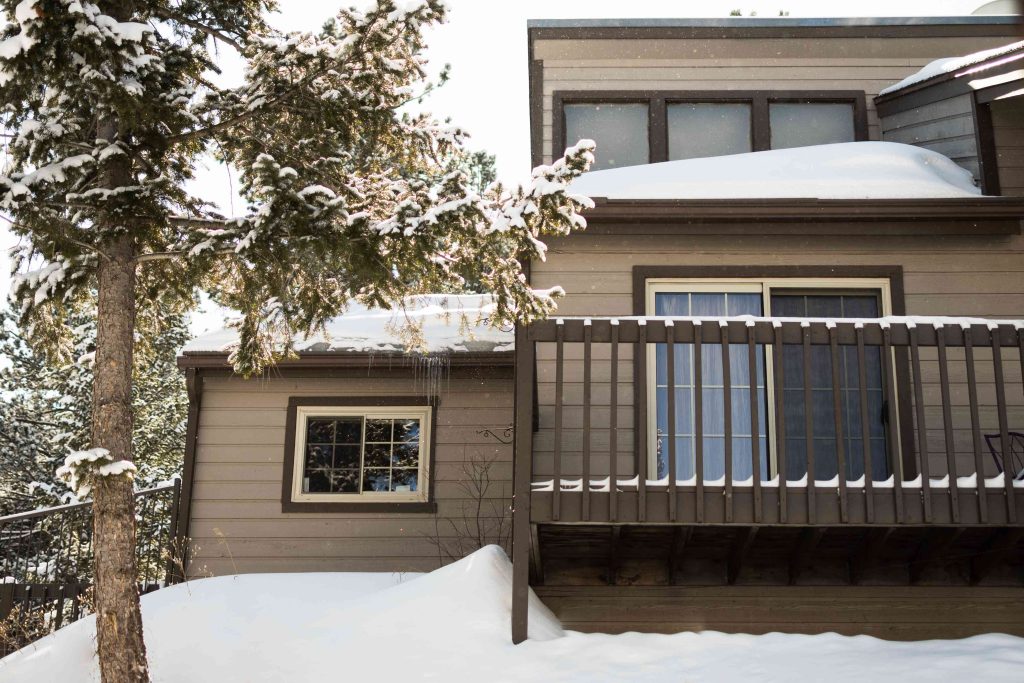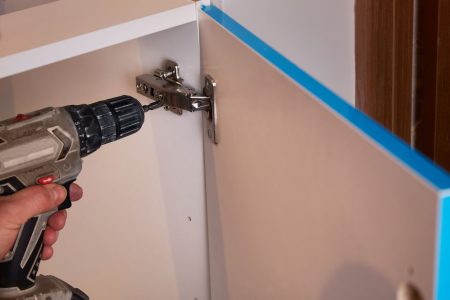In cold-winter climates, the various structural and mechanical systems in a home have an extra burden when it comes to defending against the elements. In the best of times, water can be a formidable enemy, but in regions where water manifests as ice for weeks or months at a time, the challenges are profound.
Here are 11 tips to follow to protect your home from freezing weather and all the problems that go with it.
-
01
of 11Guard Your Water Pipes
To keep outdoor plumbing fixtures from freezing, disconnect and store any garden hoses as the weather begins to turn cold. Then, shut off the water to your outdoor faucets, drain the lines, and insulate the hose bibs.
When indoor plumbing pipes run through exterior walls, take care to monitor them in the winter and make sure wall insulation is up to recommended standards.
-
02
of 11Seal Holes and Cracks
Even small holes where cable wires or phone lines enter your home can be an entry point for freezing air—or places where precious indoor heat can escape. Purchase a can of foam insulation such as Great Stuff spray foam, and close them up. Then, use weather stripping, spray foam insulation, or caulking to remedy any cracks around your doors and windows.
In regions with cold winters, checking the home’s exterior for cracks and gaps should be an annual routine.
-
03
of 11Add Insulation
Prevent your pipes from freezing and keep your house warmer by making sure your home has adequate insulation. This includes insulating your exterior walls, crawl space or basement, attic, and in many cases, the pipes themselves.
Your local energy utility company may offer free in-home energy audits that can evaluate your energy usage and recommend the necessary steps to bring the R-value in walls and ceilings up to advised levels for your region.
-
04
of 11Keep Water Flowing
If any of your indoor faucets are located on exterior walls that aren’t adequately insulated, set your faucets to a slow drip whenever temperatures dip well below freezing. This is usually necessary only during especially bitter cold spells. Faucets and pipes located along exterior walls are especially susceptible to freezing.
For maximum effectiveness, make sure both the hot and cold lines are opened slightly since both are vulnerable. Also, consider leaving cabinet doors open, so your pipes will be warmed from the room air.
Continue to 5 of 11 below. -
05
of 11Keep the Water Shut-off Accessible
Should a water line ever freeze and burst, you will need to shut off the home’s water supply immediately. If junk is blocking easy access to your main water shut valve off, rearrange your basement or garage so that it will be easily accessible in the event of a plumbing emergency. Then, make sure the shut-off valve is in good working order. Turning the valve handle all the way clockwise should shut off all water to the house. If the valve is rusted open or only closes partially, replace the main shut-off valve immediately. This is usually a job for a professional plumber.
Go a step further, and make sure everyone in your house knows where the shut-off valve is located and how to use it to turn off the water.
Note: If you live in a warmer climate, the shut-off valve may be located outside at the water meter.
-
06
of 11Locate Your Water Meter
Invest in a meter key (or keep an adjustable wrench handy), so you’ll be able to shut off the water at the meter, should the shut-off valve ever fail you. Then, practice turning the water on and off, so you’ll know how it’s done.
Note: Your city may have regulations against shutting off the water yourself. If so, keep the water department’s emergency number handy, so you’ll be able to report problems quickly.
-
07
of 11Keep Garage Doors Closed
If your garage is attached to your home, minimize the time your garage door is open. This will help to keep cold air out of your house and protect plumbing fixtures in your garage as well as pipes in the shared walls between the house and garage.
-
08
of 11Clean Gutters
Full gutters increase your chance of having ice form on your roof, and that’s not something you want to mess with. Set aside some time to clean your gutters out before the freezing temperatures get here. Gutter screens or “helmets” can prevent leaves from clogging gutters.
Continue to 9 of 11 below. -
09
of 11Check Attic Ventilation
Proper attic ventilation is vital to preventing ice dams on your roof. Inspect your attic to make sure there’s no insulation blocking your soffits or attic vents. The free flow of air in your attic will prevent warm air from melting the snow on the roof, where it can run down to refreeze at the roof edges.
-
10
of 11Maintain Your Thermostat
Make sure you’ll be able to keep your thermostat running continuously by keeping spare batteries on hand. Sometimes it’s the small details that save the day.
-
11
of 11Prepare for Vacation
When you leave your home for extended periods during the winter, consider shutting off the water to your house and draining your plumbing system, so you won’t have to worry about freezing pipes or other plumbing failures while you’re gone.
There are also a variety of freeze alarms you can purchase for your home, which can monitor the temperature in your home and send you a text message or email alerting you if temperatures fall to a dangerous level. If you are a “snowbird” that leaves your northern home for a warmer climate in the winter, such a monitor is indispensable insurance. Costs can range from $50 to several hundred dollars, but the peace of mind is well worth the investment.
And speaking of insurance, make sure your homeowner’s policy is up to date and has good coverage for the type of damage that can be incurred by freezing temperatures.
Read the full article here









